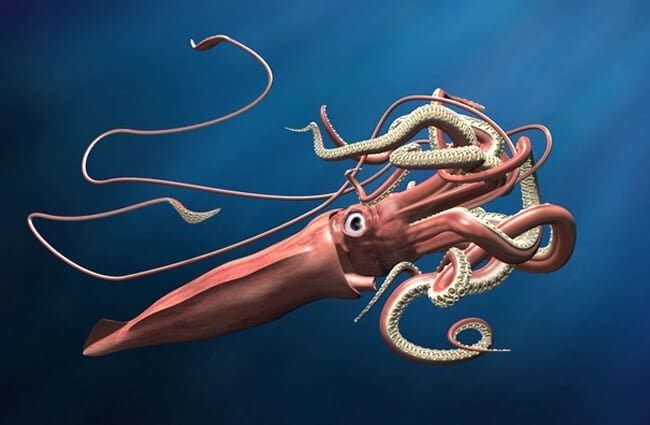The ocean is full of awe-inspiring creatures, some of which are so massive, they defy imagination.
These large water animals are not just giants of the sea—they each have distinct features and adaptations that make them stand out in their own right. From the largest animal on Earth to the fastest marine mammal, here’s a list of 10 large water animals and what makes them so extraordinary.
1. Blue Whale
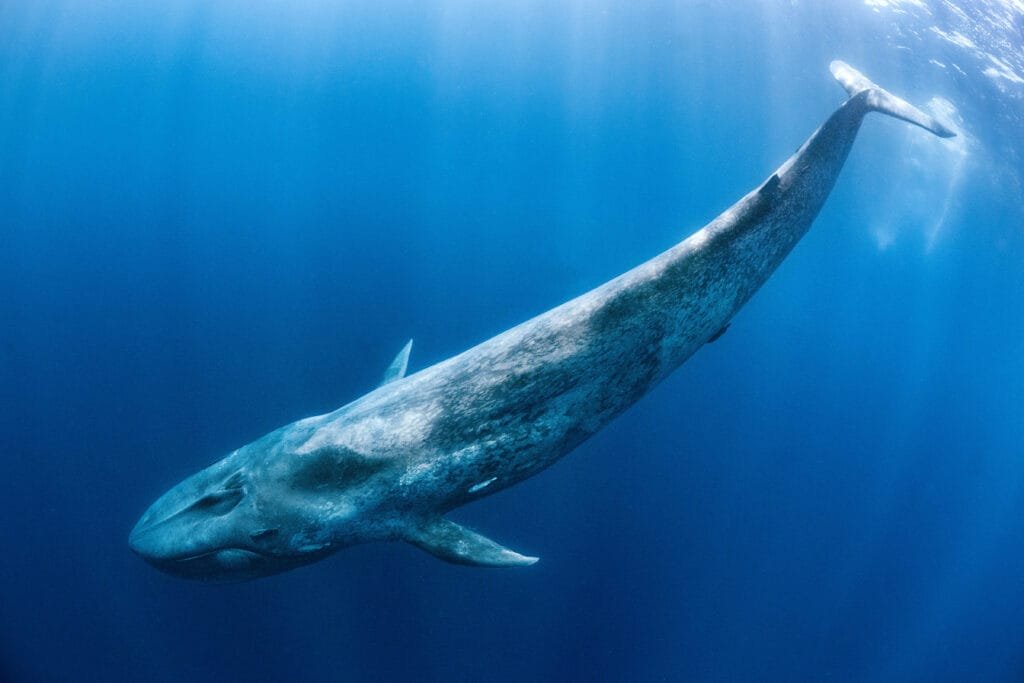
The blue whale is not just the largest animal in the ocean; it’s the largest animal to ever have lived on Earth. These magnificent creatures can reach lengths of up to 100 feet and weigh as much as 200 tons. Despite their enormous size, blue whales primarily feed on tiny shrimp-like creatures called krill. They consume several tons of krill each day during feeding season, using their baleen plates to filter out the food from the water.
What makes them unique is their sheer size, of course, but also their communication. Blue whales can communicate with each other using low-frequency sounds that can travel thousands of miles across the ocean. This ability to communicate over long distances is crucial for maintaining social connections in the vastness of the sea.
2. Sperm Whale
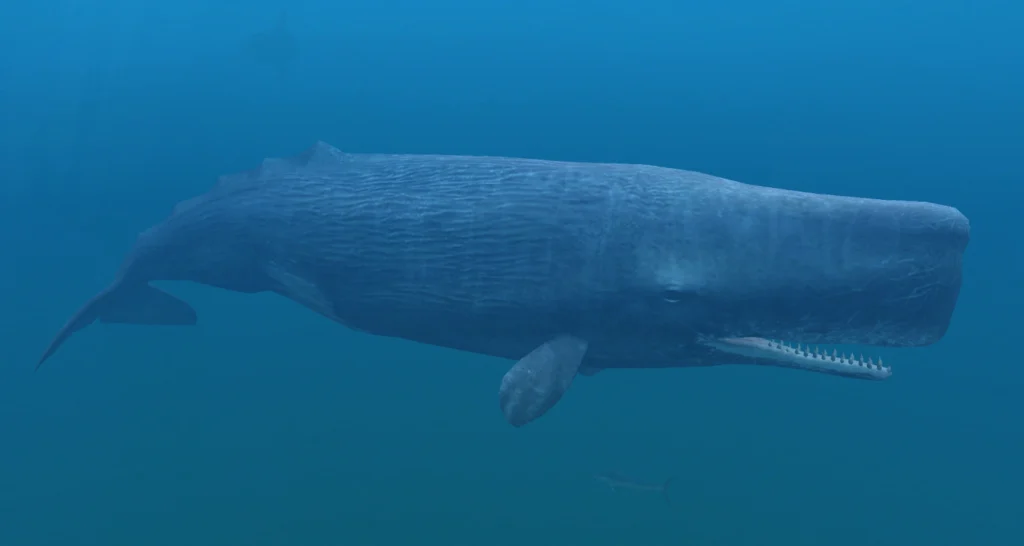
Sperm whales are another fascinating giant of the sea. With their large, block-shaped heads, sperm whales are the largest toothed whales in the world, with males growing up to 60 feet long. They have a distinctive feature—a massive head, which makes up about one-third of their total body length. Inside that head is a special organ known as the spermaceti organ, which is believed to help them dive to extreme depths.
Sperm whales are known for their deep dives, often plunging as far as 10,000 feet to hunt for squid, including the elusive giant squid. This ability to withstand the crushing pressure of deep ocean depths makes them unique in the animal kingdom.
3. Orca (Killer Whale)
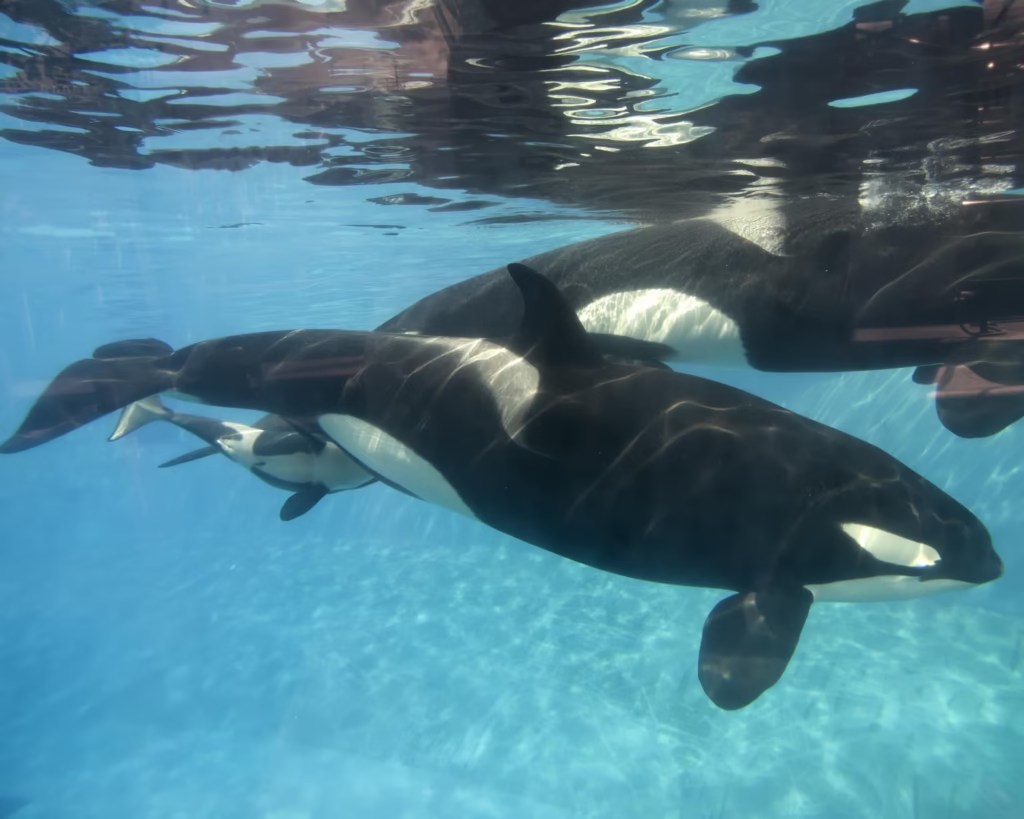
Orcas, also known as killer whales, are the largest members of the dolphin family. These highly intelligent and social animals can grow up to 32 feet long and weigh as much as 22,000 pounds. What sets them apart is their complex social structure and hunting strategies. Orcas live in tight-knit family pods, with specific roles assigned to different members of the group.
They are apex predators, meaning they sit at the top of the food chain. Orcas can hunt a wide variety of prey, including seals, fish, and even whales. Some pods specialize in hunting particular types of animals, showcasing the diversity in their hunting techniques and their adaptability to different environments.
4. Whale Shark
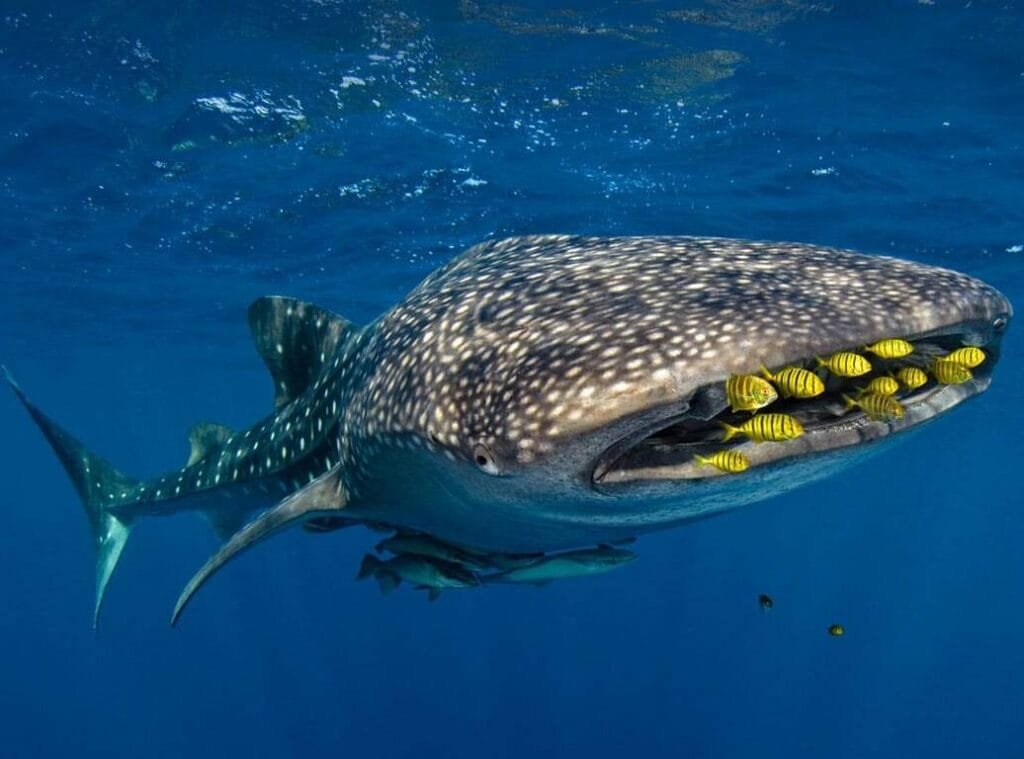
The whale shark is the largest fish in the world, reaching lengths of up to 40 feet or more. Unlike the blue whale, which is a mammal, the whale shark is a filter feeder. They have a unique, wide mouth that they use to filter plankton, small fish, and other microscopic organisms from the water as they swim.
What makes them particularly special is their pattern of spots and stripes, which is unique to each individual—much like a human fingerprint. Whale sharks are gentle giants and pose no threat to humans, despite their enormous size. Their peaceful nature and distinctive markings make them a favorite among divers and marine enthusiasts.
5. Manta Ray
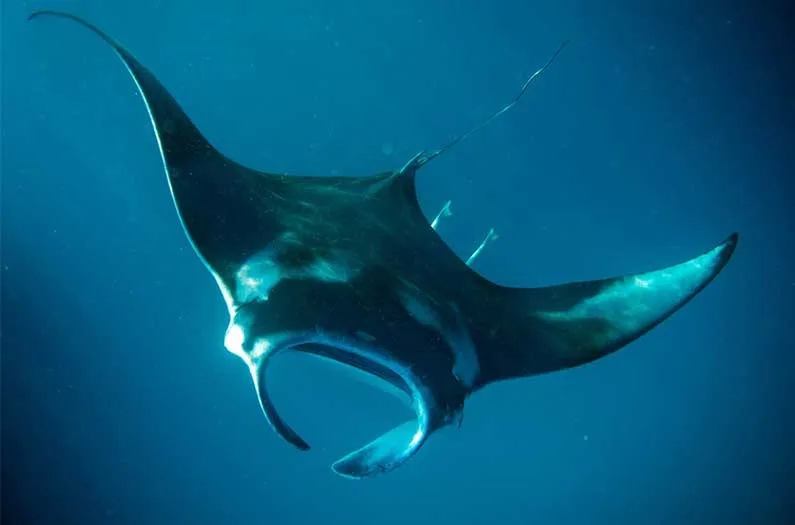
Manta rays are large, flat-bodied fish known for their graceful swimming patterns. They can grow up to 23 feet wide and weigh as much as 3,000 pounds. Manta rays have triangular pectoral fins that give them a graceful, bird-like appearance as they glide through the water.
What makes manta rays unique is their intelligence and social behavior. They are believed to be one of the most intelligent fish species, with some evidence suggesting they can recognize themselves in mirrors—an ability only found in a few animal species. They are also known to form large groups and engage in social behavior, such as “cleaning stations” where smaller fish clean parasites off their bodies.
6. Giant Squid
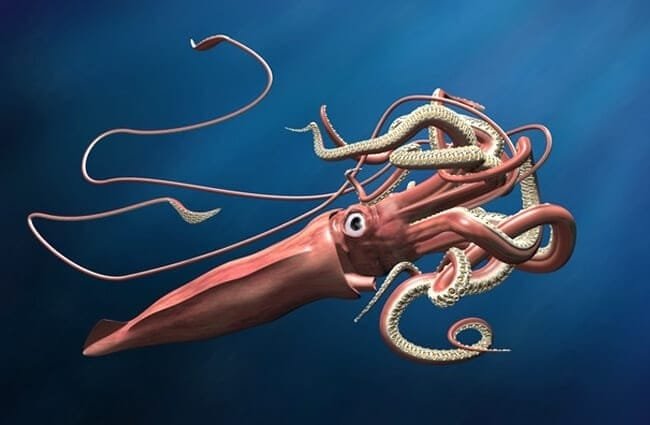
The giant squid is a mysterious and rarely seen creature that can grow up to 43 feet long. With their long, tentacle-covered bodies and enormous eyes, giant squids are well-adapted to the deep-sea environment, where light is scarce, and predators are plentiful. Despite their size, they are elusive and spend most of their lives at depths of around 1,000 feet or more.
What makes them unique is their role in the food chain, particularly as prey for sperm whales. In fact, giant squid remains have been found in the stomachs of sperm whales, suggesting that these two animals are locked in an ongoing battle in the depths of the ocean.
7. Saltwater Crocodile
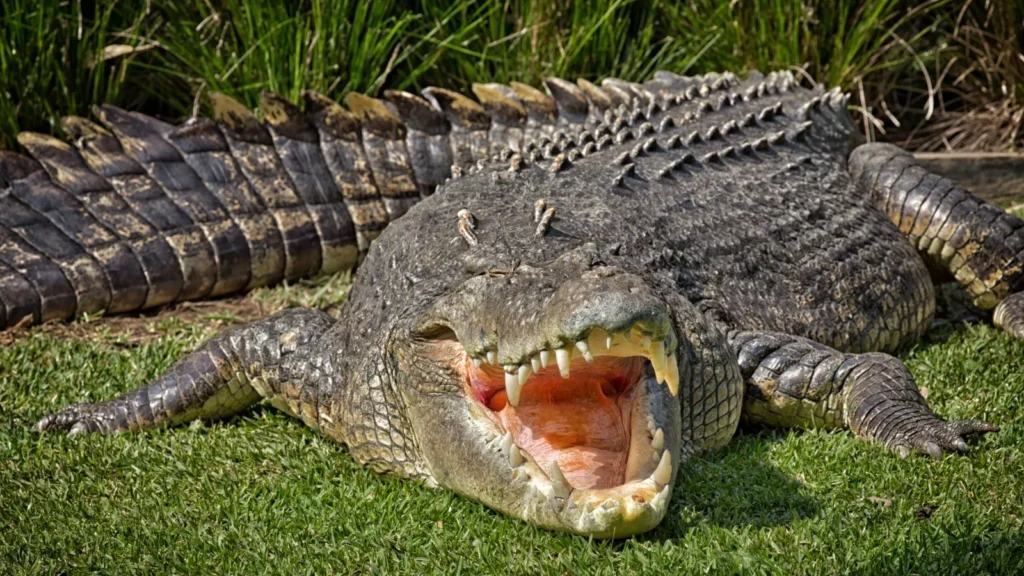
The saltwater crocodile is the largest living reptile, with some individuals reaching lengths of up to 23 feet and weighing over 2,200 pounds. Found in the Indo-Pacific region, these formidable creatures are not only huge but incredibly powerful, with one of the most powerful bite forces in the animal kingdom.
What sets them apart is their adaptability. Saltwater crocodiles are capable of living in both freshwater and saltwater, which gives them access to a wide range of habitats. They are also excellent swimmers, able to travel long distances in search of food or new territories. Their strength and adaptability make them a top predator in their ecosystem.
8. Humpback Whale

Humpback whales are large marine mammals known for their long migrations and distinctive songs. Growing up to 60 feet long, these whales are famous for their acrobatic displays, including breaching (leaping out of the water) and tail slapping. They are often seen near coastal areas and are a favorite among whale watchers due to their impressive size and behavior.
What makes humpback whales unique is their complex songs, which males use to communicate with other males during breeding season. These songs can last for hours and are believed to play a role in mating rituals. Additionally, humpbacks are known for their cooperative hunting techniques, where groups of whales work together to trap schools of fish.
9. Manatee
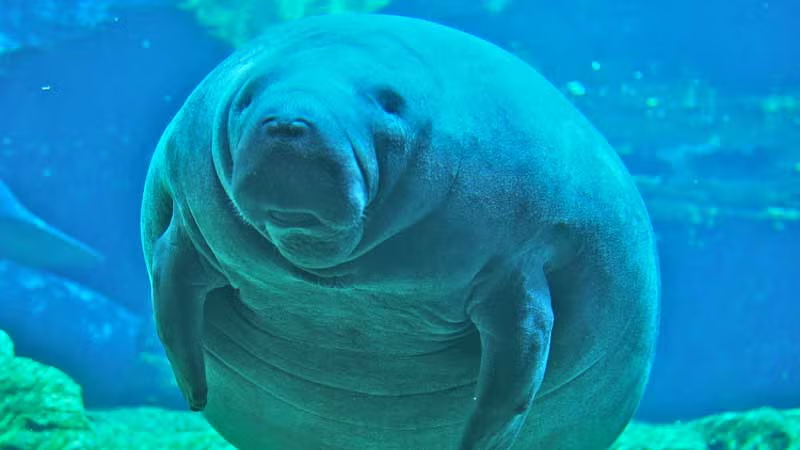
Manatees, also known as sea cows, are large, gentle herbivores that inhabit warm coastal waters. While they may not be as large as some of the other animals on this list, they can still grow up to 13 feet in length and weigh as much as 1,200 pounds. These slow-moving creatures are known for their peaceful, placid nature.
What makes manatees unique is their diet. They primarily feed on aquatic plants, and their slow metabolism means they have to eat large amounts of vegetation each day to sustain themselves. Manatees are also known for their social nature, often gathering in groups to rest and feed together.
10. Giant Pacific Octopus

The giant Pacific octopus is the largest species of octopus, with some individuals growing up to 16 feet in length and weighing over 110 pounds. Known for their remarkable intelligence, these octopuses are capable of using tools, solving puzzles, and even escaping enclosures in aquariums.
What makes them unique is their incredible ability to camouflage. Octopuses have specialized skin cells called chromatophores, which allow them to change color and texture to blend in with their surroundings. This ability to mimic their environment makes them highly effective at avoiding predators.

